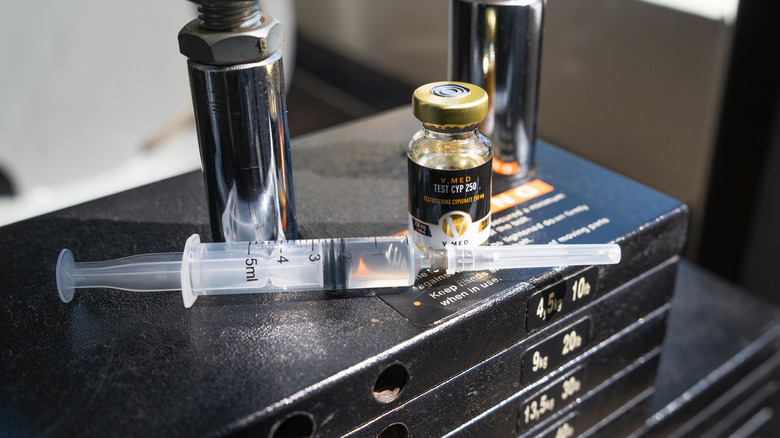These Are Some Of The Lasting Health Effects Of Steroid Misuse
Anabolic steroids are used in many sports, from bodybuilding and rugby to basketball, tennis, and canoeing. These include synthetic drugs like testosterone cypionate, oxandrolone, stanozolol, and other testosterone derivatives that stimulate muscle growth and boost athletic performance. Some can speed up post-workout recovery and reduce muscle breakdown, whereas others are particularly effective for bulking up, notes Medical News Today.
After ingestion, these substances bind to androgen receptors in muscle tissue, increasing protein synthesis. As a result, they can reduce exercise-induced muscle damage and enhance physical strength. Oxandrolone, or Anavar, and other androgenic-anabolic steroids (AAS) may also help increase lean mass and strength while burning fat, according to a 2004 study published in the Journal of Applied Physiology.
Some AAS are approved for medical use, but not for their performance-enhancing effects. For example, Medical News Today says that synthetic testosterone may be prescribed for hypogonadism, a hormonal disorder associated with low testosterone levels in men. Other AAS may help reduce muscle wasting in patients with AIDS or cancer. However, this doesn't mean they're safe.
These substances are often misused or abused, which can be fatal. A 2018 study presented in the Journal of Internal Medicine found that steroid users get sick more often and have three times higher mortality rates than the general population. As the researchers note, AAS have both immediate and long-term side effects, including acne, male breast enlargement, and heart disease.
Anabolic steroids can cause irreversible organ damage
In 1992, professional football player Lyle Alzado developed a rare form of brain cancer following years of steroid abuse, reported the New York Times. In 2017, bodybuilding icon Rich Piana died of cardiac arrest caused by AAS abuse. According to Insider, his heart and liver were double in size compared to those of a healthy person. A few days later, 26-year-old bodybuilder Dallas McCarver died of an acute cardiac event associated with these drugs.
Sadly, many athletes are willing to risk their lives in the pursuit of success. Each year, the average steroid user takes about 11 performance-enhancing drugs, from AAS to estrogen blockers, according to the National Institute on Drug Abuse (NIDA). These synthetic hormones can affect the heart, brain, liver, skin, and musculoskeletal system, causing lifelong side effects. NIDA warns that steroid misuse may lead to blood clots, hepatic tumors, heart attacks, and testicular cancer.
AASs can permanently damage the heart, according to clinical research published in the journal Drug and Alcohol Dependence. When used in high doses, they may induce cell death and neuropsychiatric toxicity. Over time, the drugs can lead to major mood disorders, such as depression, and potentially fatal diseases like cancer and atherosclerosis.
While not everyone will experience these side effects, it's not a risk worth taking. "At 23 years old, your body can tolerate this stuff. At 33, you can still tolerate it, but at 43, maybe you're dead," internal medicine physician Tom O'Connor told Insider.


